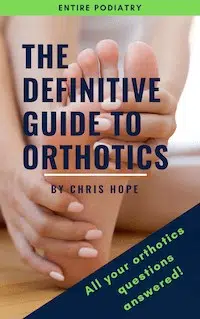What is an accessory navicular bone
Some people are born with an additional bone on the inside of their foot, just above the arch. This is known as an accessory navicular bone (also called os navicularum or os tibiale externum).
This bone lies within the posterior tibial tendon. This tendon runs from the leg, behind the ankle and inserts to the navicular bone towards the inside of the arch. This bone sits within the tendon just before it attaches to the bone.
This additional bone often goes unnoticed and is asymptomatic in many people. However, some people may experience accessory navicular pain and this is known as Accessory Navicular Syndrome.
Accessory navicular syndrome presents as a bony lump on the inside of the foot that does not go away. This lump may be red, swollen and may be painful to touch. You may experience pain from pressure within shoes and pain with activity.
Your podiatrist will likely order an x-ray to assess the size, positioning and condition of this bone and to exclude other pathologies.
Accessory navicular types
There are three different types of accessory navicular bones.
Accessory navicular type 1
This bone sits in the posterior tibial tendon. There is a small gap between the accessory bone and the navicular.
Accessory navicular type 2
This bone is partially attached to the navicular, joined by a synchrondrosis. (This means where two bones are directly joined together by cartilage).
Accessory navicular type 3
This bone is completely fused to the navicular, resulting in a large navicular.
What causes the accessory navicular to hurt
Pain usually develops because this bone is aggravated. This often occurs as a result of the following:
- Pressure or rubbing from footwear: This is especially common when the shoes are rigid such as ice skating boots, ski boots or hiking boots. Irritation from the boots or shoes against this bony prominence can lead to pain and inflammation.
- Flat feet: As the foot flattens (pronates) it places tension on the posterior tibial tendon, which pulls on the accessory navicular and causes pain. In addition, as the foot pronates the arch collapses inwards which pushes the accessory bone further into the side of the shoe, causing more irritation.
- Overuse: Excessive walking or exercise places excessive load through all the structures in the foot including the posterior tibial tendon and the accessory navicular.
- Following an injury to the foot: For example an ankle sprain can aggravate and injure the bone.
Accessory navicular syndrome treatment
This condition can usually be managed conservatively and Accessory Navicular Surgery is rarely required. The goal of treatment is to reduce the pain and inflammation and to take stress away from the bone to allow healing.
This is usually achieved with a combination of icing, anti-inflammatories and rest. Anti-inflammatory measures will help to sooth the swollen Accessory navicular bone. Depending on the severity of the pain the podiatrist may suggest a walking boot to reduce the force on the posterior tibial tendon and on the navicular. This will allow the area to rest.
Ensuring you have the right footwear will be very important to ensure that this accessory bone is not aggravated or irritated. Your podiatrist can provide you with a shoe list with specific recommendations of the best shoes for accessory navicular syndrome.
The use of custom foot orthotics is an effective way to manage the pain of accessory navicular syndrome. A custom foot orthotic is designed and manufactured using 3D scanning technology. This will capture the exact shape of the foot, including the precise location and size of the accessory navicular bone. This allows the orthotic to be specially designed to accommodate for the shape of the foot to ensure that this area is supported and is no longer strained or rubbing against the shoe.
If you have flat feet then a custom orthotic will reduce this excessive flattening (pronation) of the foot. Controlling and improving foot function will reduce tension on the posterior tibial tendon and reduce pressure on the accessory navicular, successfully managing the pain.
Your podiatrist at Entire Podiatry will be able to discuss the most appropriate treatment options for you. Contact Entire Podiatry today.





